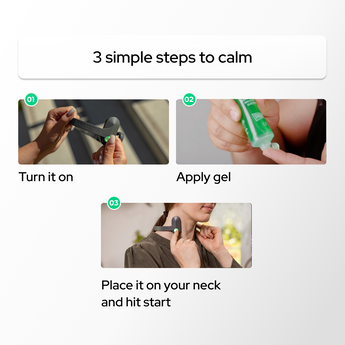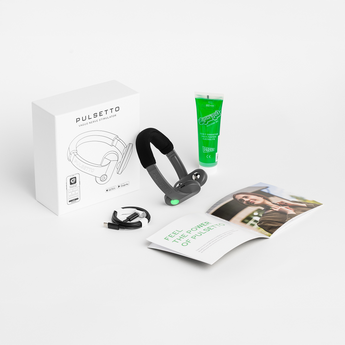Biometric Data Collection
Monitoring biometric data is essential for understanding your overall health and how it affects your sleep. Both the Oura Ring 3 and Google Nest Hub (2nd Gen) collect different types of biometric data to provide insights into your well-being.
Measurements by Oura Ring 3
The Oura Ring 3 monitors a variety of health metrics, including:
- Heart Rate
- Heart Rate Variability (HRV)
- Body Temperature
- Respiratory Rate
These metrics can help you spot trends and make informed decisions about your health. For instance, a consistently high resting heart rate might indicate that you're not getting enough rest or are under stress.
Besides that, the Oura Ring 3's ability to monitor body temperature can be particularly useful for detecting early signs of illness or changes in your circadian rhythm. For instance, a slight increase in body temperature could indicate the onset of a fever and prompt you to take preventive measures.

You can check your body’s temperature on the Oura app.
Measurements by Google Nest Hub (2nd Gen)
The Google Nest Hub (2nd Gen) primarily focuses on tracking sleep through motion and sound detection. It measures:
- Movement and breathing patterns
- Snoring and coughing
- Light and temperature in the room
While it doesn't measure as many biometric data points as the Oura Ring 3, the Nest Hub provides valuable insights into how your environment might be affecting your sleep. For example, if the device detects frequent snoring, it might suggest adjusting your sleeping position or consulting a healthcare professional.
Types of Health Metrics Tracked
The Oura Ring 3 has a more comprehensive range of biometric data. This includes heart rate, HRV, body temperature, and respiratory rate, which are crucial for understanding your overall health and how it impacts your sleep.
The Google Nest Hub (2nd Gen) focuses on environmental factors and sleep disturbances, such as snoring and coughing. While these insights are valuable, they may not provide as complete a picture of your health as the Oura Ring 3.
User Comfort and Wearability
Oura Ring 3 Design
The Oura Ring 3 is made from lightweight materials such as titanium and is easy to wear throughout the day and night without feeling cumbersome. Its sleek design ensures that it doesn't interfere with your daily activities or sleep. Plus, the ring is water-resistant, so you don't have to worry about taking it off when you shower or swim.
One of the advantages of the Oura Ring 3 is that it’s unobtrusive. Because it's worn on your finger, it doesn't get in the way or cause discomfort.
Google Nest Hub (2nd Gen) Setup
The Google Nest Hub (2nd Gen), on the other hand, is a bedside device that uses motion and sound detection to track your sleep. Setting up the Nest Hub is straightforward: simply place it on your nightstand and follow the on-screen instructions to connect it to your Wi-Fi network and Google account.

If you’re using Google Nest Hub to track your sleep, keep it on your bedside table and point it towards your torso (don’t change this angle) for better tracking accuracy.
While the Nest Hub is not a wearable device, it does require a constant power source, which means it needs to be plugged in at all times. This can be a drawback if you’re leaning towards a portable sleep-tracking solution.
Daily Usage Experience
The Oura Ring 3's lightweight design and long battery life make it convenient for continuous monitoring without the need for frequent charging.
In contrast, the Google Nest Hub (2nd Gen) provides a more holistic view of your sleep environment by monitoring factors such as light and temperature in the room.
App Integration and Data Visualization
Both the Oura Ring 3 and Google Nest Hub (2nd Gen) offer companion apps that help you visualize your sleep data and gain insights into your sleep patterns. However, the user experience and features of these apps can vary significantly.
Oura Ring Companion App
The Oura Ring 3 comes with a dedicated companion app that provides detailed insights into your sleep, activity levels, and overall health. The app gives personalized sleep insights and suggestions to help you improve your sleep habits.
- Personalized sleep insights and suggestions
- Detailed health metrics, including heart rate, HRV, and body temperature
- Activity and Readiness Scores to help you manage your daily activities

Here’s how Oura Ring’s app looks - the Bedtime Guidance card will appear at the top of your Home tab one hour before your recommended bedtime window.
The app's interface is user-friendly and easy to navigate, making it simple to access and understand your sleep data. Additionally, the Oura Ring 3 integrates with other health and fitness apps like Google Fit and Strave, allowing you to consolidate your health data.
Nest Hub and Google Fit Integration
You can use the Nest Hub device to directly track your daily sleep summaries and fitness data and get tips on the go based on your sleep history. You can also integrate the device with the Google Fit app–this app also works with various health and fitness apps such as Glow and Daily Yoga–so you can view all your health data in one place.

The Google Fit app's interface is designed to be intuitive and easy to use, making it simple to access and understand your sleep data.
Interface Ease of Use
Both the Oura Ring app and Google Fit app offer user-friendly interfaces that make it easy to access and understand your sleep data. On the other hand, the Google Fit app's integration with the Google Nest Hub (2nd Gen) offers valuable insights into your sleep environment, making it ideal for users who want to optimize their sleep conditions. The ability to view sleep summaries and insights directly on the Nest Hub also adds to the convenience of using this device.
Battery Life and Charging
Oura Ring 3 Battery Performance
The Oura Ring 3 has an impressive battery life, lasting up to 7 days on a single charge. This makes it convenient for continuous monitoring without the need for frequent charging. Charging the Oura Ring 3 is simple and takes between 20-80 minutes to reach full capacity.
Google Nest Hub Power Requirements
The Google Nest Hub (2nd Gen), on the other hand, requires a constant power source and needs to be plugged in at all times.
Convenience of Charging
The Oura Ring 3's long battery life and quick charging time make it an ideal choice for those who want a hassle-free sleep-tracking experience. The ability to wear the Oura Ring continuously without worrying about frequent charging ensures that you can consistently monitor your sleep and health metrics.
In contrast, the Google Nest Hub (2nd Gen)'s reliance on a constant power source may be less convenient for some users. However, its ability to provide valuable insights into your sleep environment can make it a worthwhile trade-off for those who want to optimize their sleep conditions.
Price Comparison
Cost of Oura Ring 3
The Oura Ring 3 is priced at around $299, making it a premium option in the sleep-tracking market. This price reflects the advanced technology and comprehensive health metrics that the ring provides. Additionally, there are different styles and finishes available, which can affect the overall cost.
While the initial investment may seem high, the Oura Ring 3 provides a wealth of health data and personalized insights that can help you improve your sleep and overall well-being. For many users, the long-term benefits of better sleep and health justify the upfront cost.
It's also worth noting that the Oura Ring 3 does not require a monthly subscription for basic features, although there is an optional Oura Membership subscription (which is paid either monthly or annually) for additional insights and features.
Cost of Google Nest Hub (2nd Gen)
The Google Nest Hub (2nd Gen) is priced at approximately $99.99, making it a more affordable option compared to the Oura Ring 3. This lower price point makes it accessible to a broader audience, especially those who are looking for a budget-friendly sleep-tracking solution.
Though it’s cheaper, the Nest Hub provides valuable sleep-tracking features and integrates seamlessly with the Google Fit app. This provides a comprehensive view of your sleep and overall health, making it a great value for the price.
Environmental Monitoring
Google Nest Hub's Room Sensing
The Google Nest Hub (2nd Gen) uses a low-energy radar (Soli) called Motion Sense to detect movement and breathing patterns. Additionally, it has sensors that pick up sounds like snoring and coughing, and environmental factors such as light and temperature in the room.
These features allow the Nest Hub to provide a comprehensive view of your sleep environment, helping you identify and address factors that may be affecting your sleep quality. For example, if the device detects that your room is too bright or too warm, it might suggest adjusting your lighting or temperature settings to create a more conducive sleep environment.

If you’re using smart lights, you can even control them from the device so that the environment is conducive for restful sleep. (image courtesy of PCMag)
Impact of Environment on Sleep
The environment in which you sleep can significantly impact your sleep quality. Factors such as light, temperature, and noise levels can either enhance or disrupt your sleep. By monitoring these environmental factors, the Google Nest Hub (2nd Gen) provides valuable insights that can help you create the optimal sleep environment.
For instance, if the Nest Hub detects frequent snoring, it might suggest adjusting your sleeping position or using a white noise machine to mask disruptive sounds. Similarly, if the device detects that your room is too bright, it might recommend using blackout curtains or an eye mask to block out light.
Additional Features
The Oura Ring 3, for example, provides a Readiness Score which assesses how well an individual's recovery and activity levels are balanced. It considers factors like sleep quality, physiological responses, and movement patterns to provide a comprehensive indication of how prepared a person is for the day ahead.
The Google Nest Hub (2nd Gen), on the other hand, integrates with Google Assistant, allowing you to control smart home devices, set alarms, and get weather updates using voice commands. This makes it a versatile addition to your smart home setup, providing both sleep tracking and smart home control in one device.
Making the Right Choice for Sleep Tracking
Overall Best Choice
For those who want a comprehensive view of their sleep and overall health, the Oura Ring 3 is the best choice. Its advanced sensors and detailed health metrics provide valuable insights that can help you make informed decisions about your sleep and well-being.
Pulsetto: A Perfect Complement
Pulsetto can be a valuable addition to your sleep-tracking routine with devices like the Oura Ring 3 and Google Nest Hub (2nd Gen). While these trackers provide detailed insights into your sleep patterns and quality, they don't directly address underlying factors like stress that may disrupt sleep.

Pulsetto, as a vagus nerve stimulator, helps promote relaxation and reduce stress, making it easier for you to fall asleep and achieve a more restorative sleep cycle.
By combining Pulsetto with your sleep trackers, you gain a holistic approach to managing your sleep health.
The Oura Ring 3 and Google Nest Hub (2nd Gen) monitor and analyze your sleep data, identifying patterns and areas for improvement. Meanwhile, Pulsetto targets stress reduction, enhancing your overall relaxation and readiness for sleep. This combination empowers you to take a proactive approach to your sleep quality, addressing both the symptoms and causes of poor sleep.
Try Pulsetto today to experience the benefits of improved relaxation and stress reduction, complementing these sleep-tracking tools for a better night's rest.
Take control of your sleep health today!
Frequently Asked Questions (FAQ)
Which device is more accurate in tracking sleep stages?
The Oura Ring 3 is generally considered more accurate in tracking sleep stages due to its advanced sensors and ability to monitor heart rate, HRV, and body temperature directly from your finger.
Does the Oura Ring 3 require a monthly subscription?
No, the Oura Ring 3 does not require a monthly subscription for basic features. However, there is an optional subscription for additional insights and features.
- Basic features are included with the initial purchase.
- Optional subscription gives additional insights and features.
Can Google Nest Hub (2nd Gen) track multiple users in one room?
No, the Google Nest Hub (2nd Gen) is designed to track the sleep of one person at a time. If you want to track multiple users, you will need to use separate devices for each person.































































